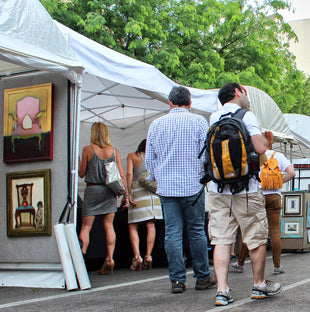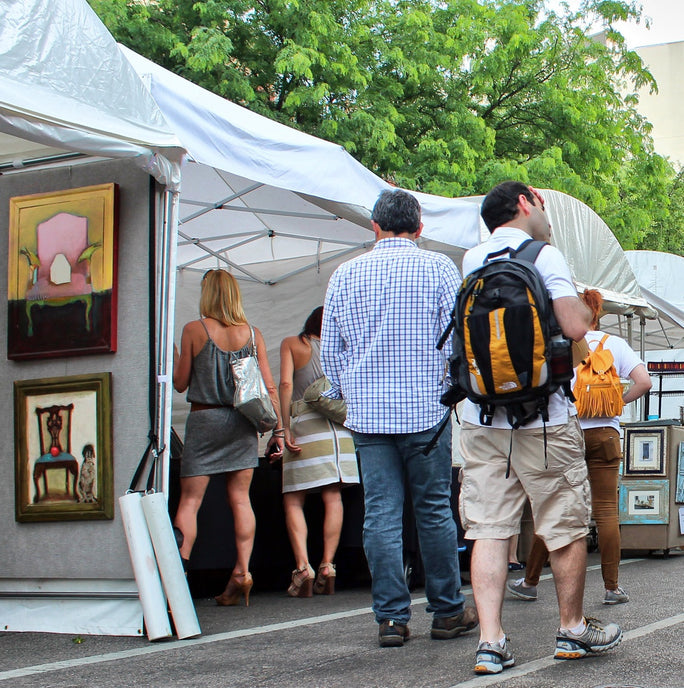How to Care for Charcoal Art: Answers to Your Questions



There is a purity about the organic qualities of charcoal art and charcoal drawing techniques that we find intriguing. The materials used such as vine charcoal or compressed charcoal create their own moody vibe. The medium and associated techniques have been used by artists for thousands of years, as is evidenced by the discovery of early cave drawings which have been found throughout the world. As used for decorating our homes, the smoky hues and tonal values of the blacks and grays against the backdrop of white paper can be incorporated within a room design to create an interesting and impactful aesthetic. We've occasionally received questions over the years about the best ways to preserve charcoal drawings. One of the main considerations with charcoal art as a dry art and a somewhat brittle medium is the potential for charcoal particles to break loose causing smudging. However, this isn't the only thing to keep in mind when contemplating the best ways to maintain the integrity of your charcoal art. As part of our series about how to care for your art, we're reviewing and researching your questions and sharing what we've learned to help ensure the longevity of your treasured charcoal artworks.
We've occasionally received questions over the years about the best ways to preserve charcoal drawings. One of the main considerations with charcoal art as a dry art and a somewhat brittle medium is the potential for charcoal particles to break loose causing smudging. However, this isn't the only thing to keep in mind when contemplating the best ways to maintain the integrity of your charcoal art. As part of our series about how to care for your art, we're reviewing and researching your questions and sharing what we've learned to help ensure the longevity of your treasured charcoal artworks.
We'll start with one of the most fundamental questions and topics of interest when it comes to charcoal drawings and art.
Should Charcoal Drawings Be Treated With Spray Fixatives to Set Your Art?
There is some debate among experts about the best way to treat charcoal art and whether it requires a sealant. While some artists believe applying a spray fixative is a fundamental step in the completion of a charcoal artwork, other artists have misgivings due to concern for particle loss.
This is one example of why it adds tremendous value to be able to ask questions of the gallery or artist when purchasing art. As it relates to caring for your charcoal drawing, find out whether or not it has been treated with a fixative. The treatment for charcoal drawings is a multi-step process that involves using a drafting brush to remove loose particles and applying multiple coats of a fixative spray, to create a gloss or matte finish.
We aren't the final authority on these matters but believe the addition of a high-quality sealant can add value and extend the longevity of your charcoal artworks.UGallery's art is sold as a finished work ready to frame or hang, but if you have questions about how a piece has been finished, just ask!
How Should You Store Your Charcoal Drawing?
Whether or not your charcoal drawing includes a protective spray if for any reason you must store your art for a period of time before hanging, use care to protect it. Store your charcoal art laid flat within layers of glassine paper. If at all possible, keep your unframed artworks in an acid-free storage box, ensuring that the box doesn't make direct contact with the artwork.
Avoid handling the artwork as much as possible as our fingertips can smudge and deposit oils onto paper. Purchasing gloves is never a bad idea when continued handling of art is unavoidable.
How Should You Frame Your Charcoal Art?
Deciding how best to frame your charcoal drawing is a personal decision though for almost all scenarios, framing under glass is advisable, with some caveats.
Caring for your charcoal art has many similarities to maintaining your pastel art. As we suggested in past articles about pastel pieces, the key is to make sure the surface of your charcoal art doesn't touch the glass directly. Your professional framer should use double or triple mat to add extra layers of protection. This is important to ensure the glass doesn't disturb the charcoal causing smudging or displacement of particles.
As a fundamental rule, ensure your framer has the credentials and knowledge for framing original art. Archival materials should be utilized including acid-free products and high-quality glass. Museum glass offers the best protection as it relates to potentially damaging ultraviolet rays.
Where Should You Hang Your Charcoal Art
Charcoal is less susceptible to fading from sun exposure as compared to most other mediums but you will still want to be deliberate in finding the best room within which to hang your charcoal painting. Displaying it in a room that receives sunny warmth is fine but never hang your art in a manner in which it will be exposed to direct sunlight.
Lighting can be particularly impactful for illuminating your charcoal drawings however follow the same unofficial rules that apply to all your fine art. Avoid any light sources that emit UV rays, with LED lighting being the safest choice to showcase your beloved charcoal art.
How Should You Clean Your Charcoal Art?
If you're looking to freshen up your framed charcoal art which may have gathered a bit of dust, use caution when applying pressure to your glass framed piece. As we've discussed, charcoal is a delicate medium for which particles can loosen. Gently apply a damp cloth and be careful not to create friction.
Final Thoughts
Original art has immeasurable value both as an asset and investment as well for the joy that it brings to our daily lives. Taking steps to maintain our artworks can make a meaningful difference in ensuring they can be enjoyed and appreciated for generations to come.
If you’re in the market for charcoal art or other original works, we have a continuously updated selection by talented artists. You can peruse artworks updated weekly on our website.





